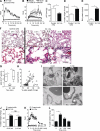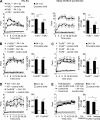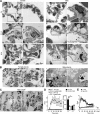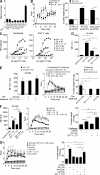MHC class I-specific antibody binding to nonhematopoietic cells drives complement activation to induce transfusion-related acute lung injury in mice
- PMID: 22025304
- PMCID: PMC3256958
- DOI: 10.1084/jem.20110159
MHC class I-specific antibody binding to nonhematopoietic cells drives complement activation to induce transfusion-related acute lung injury in mice
Abstract
Transfusion-related acute lung injury (TRALI), a form of noncardiogenic pulmonary edema that develops during or within 6 h after a blood transfusion, is the most frequent cause of transfusion-associated death in the United States. Because development of TRALI is associated with donor antibodies (Abs) reactive with recipient major histocompatibility complex (MHC), a mouse model has been studied in which TRALI-like disease is caused by injecting mice with anti-MHC class I monoclonal Ab (mAb). Previous publications with this model have concluded that disease is caused by FcR-dependent activation of neutrophils and platelets, with production of reactive oxygen species that damage pulmonary vascular endothelium. In this study, we confirm the role of reactive oxygen species in the pathogenesis of this mouse model of TRALI and show ultrastructural evidence of pulmonary vascular injury within 5 min of anti-MHC class I mAb injection. However, we demonstrate that disease induction in this model involves macrophages rather than neutrophils or platelets, activation of complement and production of C5a rather than activation of FcγRI, FcγRIII, or FcγRIV, and binding of anti-MHC class I mAb to non-BM-derived cells such as pulmonary vascular endothelium. These observations have important implications for the prevention and treatment of TRALI.
Figures










Similar articles
-
Lack of evidence of CD40 ligand involvement in transfusion-related acute lung injury.Clin Exp Immunol. 2011 Aug;165(2):278-84. doi: 10.1111/j.1365-2249.2011.04422.x. Epub 2011 May 23. Clin Exp Immunol. 2011. PMID: 21605114 Free PMC article.
-
Platelets are dispensable for antibody-mediated transfusion-related acute lung injury in the mouse.J Thromb Haemost. 2016 Jun;14(6):1255-67. doi: 10.1111/jth.13335. Epub 2016 May 21. J Thromb Haemost. 2016. PMID: 27063192
-
The effect of C1-inhibitor in a murine model of transfusion-related acute lung injury.Vox Sang. 2014 Jul;107(1):71-5. doi: 10.1111/vox.12128. Epub 2013 Dec 27. Vox Sang. 2014. PMID: 24372323
-
Platelet-neutrophil interactions as a target for prevention and treatment of transfusion-related acute lung injury.Curr Pharm Des. 2012;18(22):3260-6. doi: 10.2174/1381612811209023260. Curr Pharm Des. 2012. PMID: 22621270 Review.
-
Transfusion reactions: newer concepts on the pathophysiology, incidence, treatment, and prevention of transfusion-related acute lung injury.Crit Care Clin. 2012 Jul;28(3):363-72, v. doi: 10.1016/j.ccc.2012.04.001. Crit Care Clin. 2012. PMID: 22713611 Free PMC article. Review.
Cited by
-
Transfusion-Related Acute Lung Injury (TRALI) in Postoperative Anesthesia Care Unit (PACU) After One Unit of Platelets: A Case Report.Cureus. 2022 Sep 17;14(9):e29274. doi: 10.7759/cureus.29274. eCollection 2022 Sep. Cureus. 2022. PMID: 36277519 Free PMC article.
-
The Role of Complement in Transfusion-Related Acute Lung Injury.Transfus Med Rev. 2019 Oct;33(4):236-242. doi: 10.1016/j.tmrv.2019.09.002. Epub 2019 Oct 18. Transfus Med Rev. 2019. PMID: 31676221 Free PMC article. Review.
-
Antioxidants as Therapeutic Agents in Acute Respiratory Distress Syndrome (ARDS) Treatment-From Mice to Men.Biomedicines. 2022 Jan 4;10(1):98. doi: 10.3390/biomedicines10010098. Biomedicines. 2022. PMID: 35052778 Free PMC article. Review.
-
Update on transfusion-related acute lung injury: an overview of its pathogenesis and management.Front Immunol. 2023 May 12;14:1175387. doi: 10.3389/fimmu.2023.1175387. eCollection 2023. Front Immunol. 2023. PMID: 37251400 Free PMC article. Review.
-
The Immune System in Transfusion-Related Acute Lung Injury Prevention and Therapy: Update and Perspective.Front Mol Biosci. 2021 Mar 24;8:639976. doi: 10.3389/fmolb.2021.639976. eCollection 2021. Front Mol Biosci. 2021. PMID: 33842545 Free PMC article. Review.
References
-
- Ajuebor M.N., Das A.M., Virág L., Flower R.J., Szabó C., Perretti M. 1999. Role of resident peritoneal macrophages and mast cells in chemokine production and neutrophil migration in acute inflammation: evidence for an inhibitory loop involving endogenous IL-10. J. Immunol. 162:1685–1691 - PubMed
-
- Bhatia S., Fei M., Yarlagadda M., Qi Z., Akira S., Saijo S., Iwakura Y., van Rooijen N., Gibson G.A., St Croix C.M., et al. 2011. Rapid host defense against Aspergillus fumigatus involves alveolar macrophages with a predominance of alternatively activated phenotype. PLoS ONE. 6:e15943 10.1371/journal.pone.0015943 - DOI - PMC - PubMed
Publication types
MeSH terms
Substances
LinkOut - more resources
Full Text Sources
Other Literature Sources
Medical
Molecular Biology Databases
Research Materials

